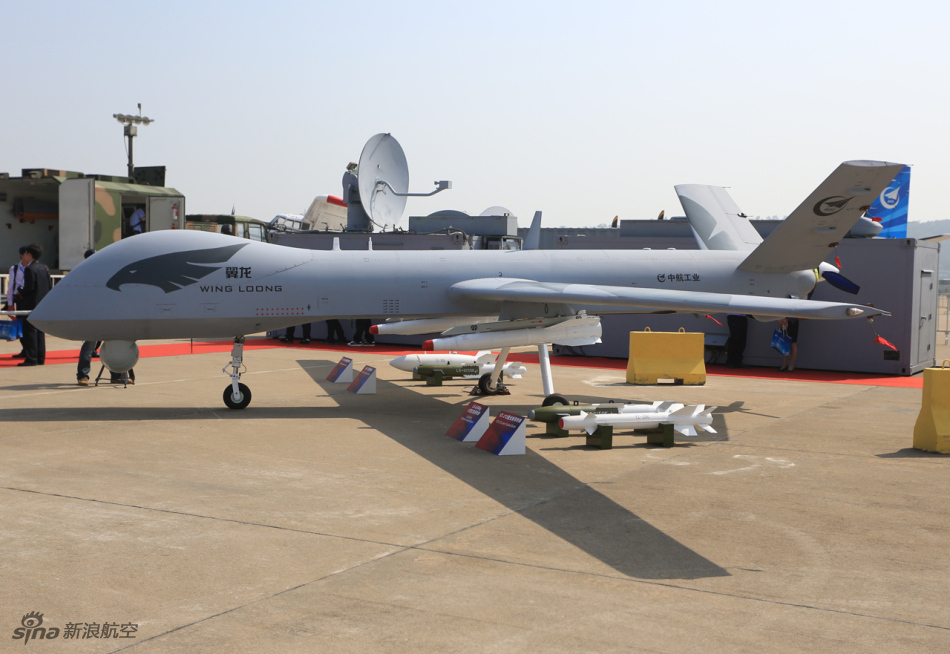By Major (r) Haroon Rasheed Defense and strategic analyst member REC ABAD
Introduction
Since first being inducted by the Pakistan Air Force (PAF) around 2018–2021, the Chinese-made Wing Loong II unmanned combat aerial vehicle (UCAV) has emerged as a transformative platform for Pakistan’s aerial reconnaissance and precision strike capabilities. In recent developments, the Pakistan Army has also begun integrating this potent system into its own operations—marking a significant expansion of its role across multiple branches of the country’s armed forces.
Trump imposes extra 25% tariff on India over Russian oil, total levy 50%
80 Years After Hiroshima, Calls for Nuclear Disarmament Renewed
Aima Baig Ties the Knot in Canada in Private Ceremony with Zain Ahmad
For more such Opinions & Blogs, click here.
1. Pakistan Air Force Induction: 2018–21
In October 2018, Pakistan and China agreed to co‑produce 48 Wing Loong II UAVs through a joint arrangement between Pakistan Aeronautical Complex (PAC) Kamra and Chengdu Aircraft Industry Corporation (CAC), as publicly announced by the PAF’s Sherdils aerobatic team. These drones are understood to be cost-competitive relative to Western platforms, priced roughly around $1 million per unit.
The Wing Loong II platform boasts:
- Up to 480 kg payload capacity, delivered via 6 hardpoints for bombs, rockets, or air‑to‑surface missiles.
- Endurance of roughly 20 hours, a maximum speed of ~370 km/h, and ceilings near 9,000 m.
- Advanced sensors, including electro-optical/infrared cameras, SAR ground radar, FLIR, laser designator and satellite communications links.
Under PAF leadership, Wing Loong II joined a broader UAV modernization drive alongside platforms such as the CH‑4, TB2, and Akinci, backed by major training and doctrine upgrades.
Modi to Visit China for SCO Summit, His First Trip Since Galwan Clash
Gaya Airport’s ‘GAY’ Code ‘Uncomfortable’: Rajya Sabha Member
Half Of Pakistan’s Bureaucracy Preparing Foreign Exit Via Portugal’: Defence Minister
2. Combat Use and Strategic Employments
The Wing Loong II has been actively deployed in counterterrorism missions across Pakistan, and notably used in cross-border strikes, including during Operation Marg Bar Sarmachar, targeting militants across the Iranian border in early 2024, in concert with F‑16s, J‑10Cs, and JF‑17s.
Globally, Wing Loong IIs have seen combat with operators such as the UAE in Libya. In Pakistan, satellite imagery from 2021 confirmed the presence of Wing Loong IIs at Mianwali Air Base, equipped with SAR and full weapon capacity.
More recently, during Pakistan’s Operation Sindoor in May 2025, Indian Air Force strikes destroyed a hangar at Sukkur Air Base (PAF Bholari) housing multiple Wing Loong II drones. Satellite imagery confirmed the hangar’s complete collapse, likely neutralizing multiple units—a substantial operational loss.
3. Pakistan Army Joins the Wing Loong II Fold
Previously, the Pakistan Army Aviation Corps had primarily relied on CH‑4B drones for aerial surveillance and strike tasks. However, more recent reports indicate the Army has begun fielding the Wing Loong II as well, in line with its heavier payload and long-endurance capabilities.
Though the exact scale of Army acquisition remains undisclosed, this marks a strategic diversification of UAV assets—allowing the Army to capitalize on the Wing Loong II’s extended range, sensor package, and strike precision for mission sets previously exclusive to the Air Force.
Nabeel Zafar Voices Concern Over Inflation and Rising Electricity Costs
DG ISPR dismisses reports of Field Marshal becoming President
ISPR releases new patriotic song on Independence Day, Marka-e-Haq
4. Design and Operational Capabilities
Size and Design: About 11 m long with a wingspan of 20.5 m and max takeoff weight near 4,200 kg.
Performance: Service ceiling ~32,500 ft, endurance ~20 hours, top speed ~370 km/h.
Navigation & Control: Satellite communications-capable, remotely controlled from Mobile Ground Stations (GCS) with encrypted datalinks.
Armament Options: AR‑1/HJ‑10 anti-tank missiles, laser-guided bombs (TG100, GB‑ variants), BRMI rockets; payload ~400–480 kg.
Death anniversary of film actress Nadra being observed today
Parliament Cafeteria Contract Terminated Over Hygiene Concerns
Over 1,000 Afghans, including 400 Prisoners, Return from Pakistan
5. The Strategic Shift—What It Means
Expanded Domain Coverage
Army usage of Wing Loong II allows layered UAV operations for border security, surveillance, and precision strike from both ground and air branches.
Operational Flexibility
With broader access to a multi-role drone, the Army can plan missions across the full spectrum—from static counterinsurgency to mobile battlefield support.
Inter-Services Coordination
Deploying Wing Loong IIs in both Air Force and Army strengthens aviation interoperability, shared ground stations, unified doctrine, and cross-trained crews.
Conclusion
The arrival of Wing Loong II into Pakistan Army service boils down to a strategic evolution. What began as a PAF-dominated UCAV program has now transformed into an integrated, multi-branch capability. This not only increases the country’s UAV sophistication but also reflects a doctrinal shift toward jointness and flexible deployment.
As Pakistan’s Air Force and Army embrace this platform, Wing Loong II is reshaping mission planning, force structure, and regional deterrence—a testament to ascending drone warfare in the next generation of defense strategy.
For more such Opinions & Blogs, click here.
Azam Swati Stopped at Peshawar Airport Following PHC Travel Order
Digital billboard trucks in Washington flash messages against India’s settler colonialism in Kashmir
Afghanistan name squad for tri-series vs Pakistan, UAE
Facing India on September 14 will be a major challenge: Rashid Latif
Mubasher Lucman expresses grief over GM Sikandar’s death
Major (R) Haroon Rasheed is a defense and strategic analyst specializing in South Asian military dynamics, deterrence strategy, and defense modernization. He is a member of the Research and Evaluation Cell for Advancing Basic Amenities and Development (REC ABAD).
Stay tuned to Baaghi TV for more. Download our app for the latest news, updates & interesting content!






